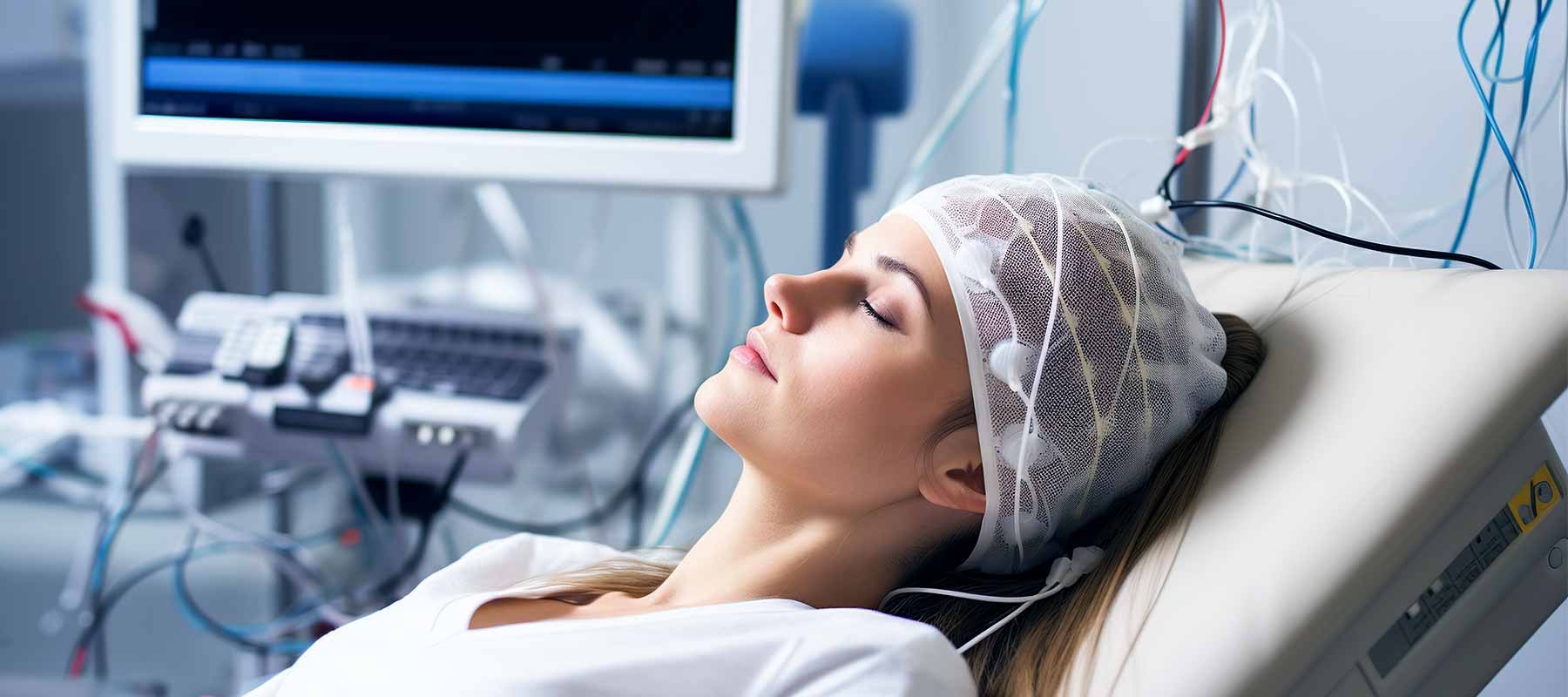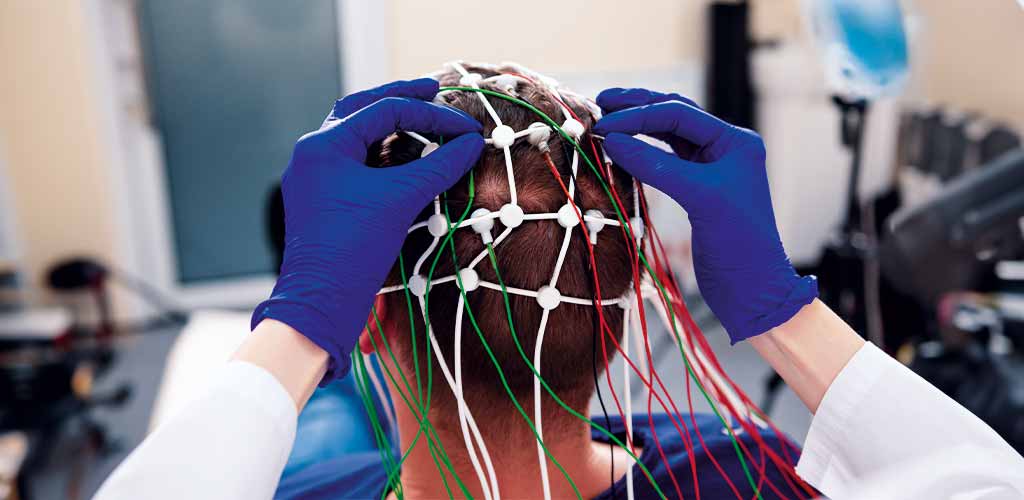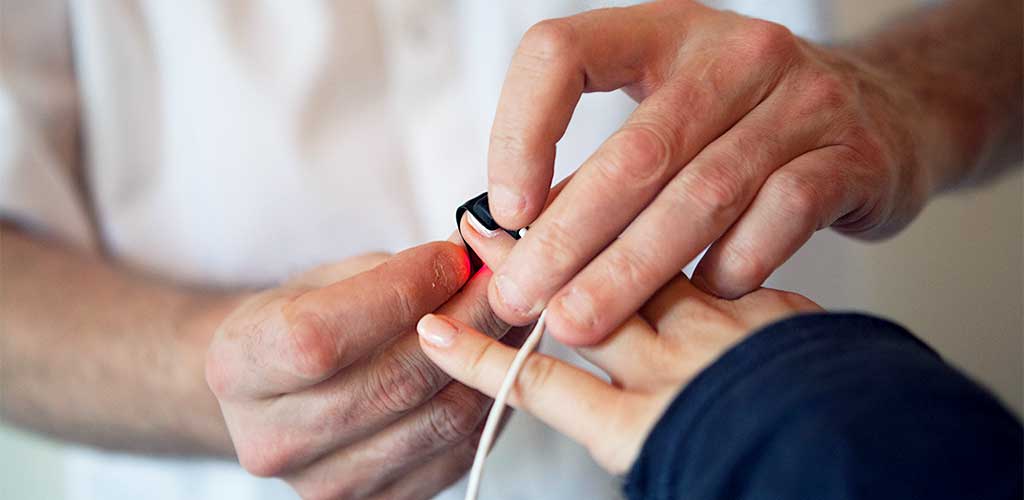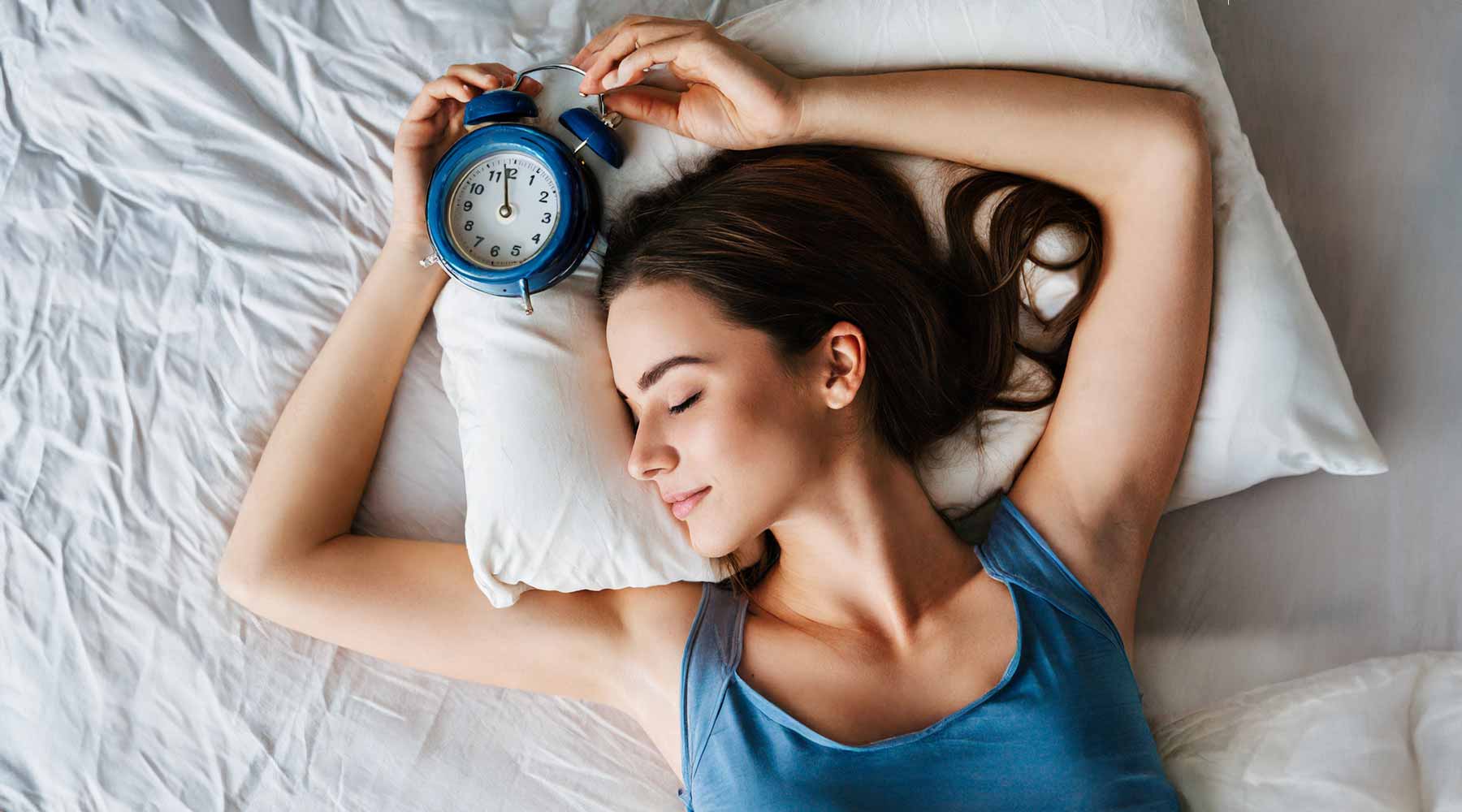
How does polysomnography work?
Polysomnography is the most well-known method for investigating sleep disorders and is performed in specialized sleep laboratories. Here, we explain what happens during polysomnography and how it helps identify sleep problems.
Table of contents
- What is polysomnography?
- How does polysomnography work?
- How does polysomnography work?
- Who needs polysomnography?
- Conclusion
1. What is polysomnography?
Polysomnography (PSG) is a sleep study procedure in which various biological parameters are measured during sleep and subsequently evaluated. This allows sleep behavior to be comprehensively examined at a physiological level and provides information about the time it takes to fall asleep, sleep interruptions, and other abnormalities. This can help identify sleep problems, especially those with organic causes – for example, movement disorders or breathing pauses (Sleep apnea).
2. How does polysomnography work?
During sleep, the entire body's functions change, so polysomnography collects a wide variety of information that can ultimately be combined to create the most concise picture possible. Brain waves, eye movements, heart and respiratory function, and muscle activity are measured and recorded during sleep using well-known medical procedures (ECG, EEG, etc.).
This allows the body to be examined in its holistic function during sleep, revealing sleep problems and potential causes. For example, one learns whether the patient has a healthy sleep structure and all Sleep phases runs through or moves unusually at night.
These parameters are recorded during polysomnography:
- Brain waves using EEG (electroencephalicography)
- Eye movement using EOG (electrookulography)
- Muscle tension tone using EMG (Electricalmyography)
- Heart rate and heart rhythm using ECG (electrocardiograms)
- Body temperature
- Breath flow and breathing movement
- Oxygen content in the blood
- Leg movement
- Body position
3. How does polysomnography work?

The examination is quite comprehensive and usually takes place under observation in a sleep laboratory. However, there is also the option of an outpatient screening at home beforehand, a so-called polygraphy. The patient is given a small device to take home overnight that monitors, among other things, pulse rate, blood oxygen saturation, and respiratory function. A polygraphy is often the first step in identifying sleep problems. If abnormalities are found, an inpatient polysomnography in a sleep laboratory often follows. There, the patient is cared for overnight by trained staff.
The patient spends the night in the sleep lab in a monitored single room. There, they prepare for sleep as usual and are then connected to all monitoring devices. For this purpose, numerous small electrodes (sensors) are applied directly to the skin on the head and the rest of the body. These are connected via cables to a portable measuring device, allowing the patient to remain mobile during the night and, for example, go to the bathroom without disconnecting the electronic connections.Once all preparations have been made, the staff leaves the room, goes to the monitoring room and the patient can lie down and sleep.
The next morning, all electrodes are removed and the results of the examination are evaluated. These are often discussed in a separate appointment.

4. Who needs polysomnography?
Polysomnography is usually considered when serious sleep disorders exist and outpatient diagnostic procedures do not provide sufficient information.
Polysomnography is often used for…
- Sleep apnea (Breathing pauses at night) and other breathing problems
- Insomnia (Persistent difficulty falling asleep and staying asleep)
- Narcolepsy (Sleep attacks & drowsiness)
- Restless Legs Syndrome (RLS) and other movement disorders
- Unusual behavior, e.g., REM sleep disorder, sleepwalking
Whether a sleep laboratory examination is necessary is usually decided by the general practitioner or ENT doctor.
5. Conclusion
-
Polysomnography is a method for examining sleep in order to identify sleep disorders and their causes.
-
Polysomnography involves analyzing brain activity, heart and respiratory function, eye movement, and many other physiological parameters using electrodes and measuring devices.
-
Polysomnography takes place in a sleep laboratory and is suitable for people who suffer from sleep disorders such as sleep apnea, insomnia or RLS.
Best wishes and see you soon!



Leave a comment
This site is protected by hCaptcha and the hCaptcha Privacy Policy and Terms of Service apply.